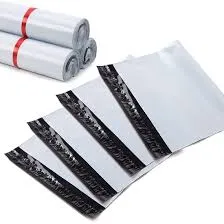stretch film wrap
The Versatility of Stretch Film Wrap A Comprehensive Guide
Stretch film wrap, often referred to as pallet wrap, is a highly versatile packaging solution that has gained immense popularity in various industries. Its primary function is to secure and protect items during transportation and storage, ensuring that goods remain intact and undamaged. In this article, we will explore the characteristics, uses, and advantages of stretch film wrap, shedding light on why it has become an essential tool in logistics and distribution.
Understanding Stretch Film Wrap
Stretch film is a thin plastic film made from linear low-density polyethylene (LLDPE). It is designed to stretch tightly around items, holding them securely in place. The film is available in various widths, thicknesses, and types, including hand stretch film (applied manually) and machine stretch film (used with wrapping machines). This flexibility allows businesses to choose the right type of stretch film for their specific needs.
Benefits of Stretch Film Wrap
1. Protection Against Damage One of the primary purposes of stretch film wrap is to protect products from external elements such as dust, moisture, and dirt. By wrapping products securely, businesses can minimize the risk of damage during transit.
2. Improved Stability When items are wrapped together, they are less likely to shift or topple over during transportation. This stability is particularly crucial for pallets, as it prevents the contents from spilling or breaking.
3. Cost-Effectiveness Stretch film is a cost-efficient packaging solution. It requires less material compared to other forms of packaging, such as boxes or crates, reducing shipping costs and environmental impact.
4. Versatility Stretch film wrap can be used for a wide variety of products, including furniture, glassware, food items, and industrial equipment. Its adaptability makes it a go-to choice across different sectors.
5. Easy Application Stretch film is easy to use, whether manually or mechanically applied. This ease of use helps to streamline the packaging process and increase operational efficiency.
Applications of Stretch Film Wrap
stretch film wrap

Stretch film wrap is widely used across diverse industries. Here are some common applications
- Warehousing and Logistics In warehouses, stretch film is used to secure goods on pallets for storage and transportation. Properly wrapped pallets are less likely to incur damage, leading to fewer losses and more efficient inventory management.
- Retail Packaging Retailers often use stretch film to package products for sale. It enhances product visibility while providing a protective barrier.
- Construction In the construction industry, stretch film is used to wrap tools, materials, and equipment. This protects them from weather elements, reducing wear and tear.
- Food Production Stretch film is commonly used in the food industry to wrap perishable items, keeping them fresh and shielded from contamination.
- Moving and Storage Individuals and businesses alike use stretch film for moving. It can secure items to prevent shifting during transport, making it a reliable option for moving companies.
Environmental Considerations
While stretch film wrap offers numerous benefits, there are also environmental concerns associated with its use. Traditional plastic films can contribute to pollution if not disposed of properly. However, the packaging industry is responding by developing biodegradable and recyclable stretch films, helping to mitigate environmental impacts.
Conclusion
Stretch film wrap is an indispensable tool in the packaging and logistics industry. Its protective qualities, cost-effectiveness, and versatility make it a preferred choice for many applications. As businesses continue to seek efficient and sustainable packaging solutions, stretch film will likely remain a significant player in the market. By understanding its benefits and applications, companies can effectively harness this powerful packaging solution to improve their operational efficiency and protect their products. As we move forward, embracing more sustainable practices in the production and disposal of stretch film will be essential to ensuring a greener future.
-
The Best Uses for Small Trash Bags in Daily LifeNewsJul.01,2025
-
Stylish Reusable Grocery Bags TrendsNewsJul.01,2025
-
Shipping Advantages of Using Bubble Envelopes BulkNewsJul.01,2025
-
How Compostable Mailing Bags Reduce Environmental ImpactNewsJul.01,2025
-
Environmentally - Friendly Bulk Poly MailersNewsJul.01,2025
-
Eco Friendly Custom Laminated Tote BagsNewsJul.01,2025
-
Have the freedom of customizing your custom mailers any way you want! Our dedicated packaging support will help deliver you the mailing experience you need to elevate your shipping experience to the next level! Start making a strong impression on your customers and stand out from your competitors! -
LIYA uses high quality raw materials which directly purchased from large enterprises domestic and overseas such as PetroChina, Sinopec, Sabic, Equate, ExxonMobil, Dow Chemical, Total, and Borouge, ensuring the price advantage and quality of the raw materials. -
LIYA uses high quality raw materials which directly purchased from large enterprises domestic and overseas such as PetroChina, Sinopec, Sabic, Equate, ExxonMobil, Dow Chemical, Total, and Borouge, ensuring the price advantage and quality of the raw materials.





